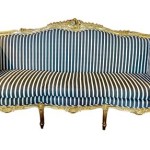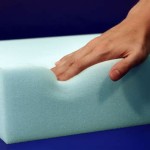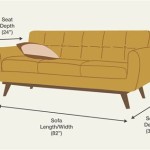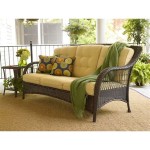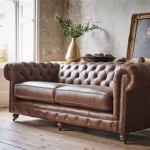The Enduring Appeal of the Two-Seater Vintage Sofa
The two-seater vintage sofa represents more than just a place to sit; it embodies a piece of history, a reflection of design trends from bygone eras, and an investment in unique home décor. Its compact size makes it a versatile addition to various living spaces, while its vintage character brings a sense of personality and charm that mass-produced furniture often lacks. Understanding the nuances of these sofas, from identifying authentic pieces to considering their restoration and placement, is key to appreciating their enduring appeal.
The term "vintage" itself is crucial. In the context of furniture, it typically refers to pieces that are at least 20 years old but not quite antique (which are generally over 100 years). This timeframe encompasses a wide range of styles, from the mid-century modern designs of the 1950s and 60s to the more ornate and traditional forms of earlier decades. Each period has its distinct characteristics, influencing the sofa's shape, materials, upholstery, and overall aesthetic.
Key Considerations When Selecting a Two-Seater Vintage Sofa
Choosing the right two-seater vintage sofa requires careful consideration of several factors. These considerations range from assessing authenticity and condition to aligning the sofa with existing décor and intended use.
First and foremost, evaluating the sofa’s authenticity is paramount. Genuine vintage pieces possess characteristics that distinguish them from reproductions or more recent designs styled to look old. Detailed examination of the frame's construction is crucial. Vintage sofas often feature solid wood frames joined with traditional techniques such as dovetail joints or mortise-and-tenon joints. These methods provide superior strength and durability compared to modern alternatives like stapled particleboard. Original upholstery, even if worn, can offer clues about the sofa's age and origin. Traces of original fabrics, stitching patterns, and padding materials can be invaluable when determining authenticity.
The sofa’s condition is another critical aspect. While some wear and tear can be expected in vintage furniture, it's important to assess the extent of any damage. Check the frame for signs of warping, cracking, or insect infestation. Examine the upholstery for rips, stains, or excessive fading. Sagging cushions may indicate worn-out springs or filling. Restoration can be a viable option, but it’s important to factor in the cost and complexity of repairs when making a purchase. Some minor imperfections can add character, while significant structural issues might make restoration economically unfeasible. A professional appraisal can provide an objective assessment of the sofa's condition and potential restoration costs.
Finally, consider the sofa's overall aesthetic and how it complements the intended space. A two-seater vintage sofa can serve as a focal point or blend seamlessly with existing décor. Consider the room's color palette, style, and other furniture pieces. A mid-century modern sofa with clean lines and minimalist design might be ideal for a contemporary living room, while a more ornate Victorian-era sofa could add a touch of elegance to a traditional setting. Consider the scale of the sofa relative to the room's size. A large, bulky sofa in a small space can feel overwhelming, while a small, delicate sofa might get lost in a large, open room.
Identifying Common Styles of Two-Seater Vintage Sofas
The world of vintage sofas is diverse, encompassing a wide range of styles and influences. Familiarizing oneself with these styles can aid in identifying and appreciating the unique features of each piece.
Mid-century modern sofas, popular from the 1940s to the 1960s, are characterized by their clean lines, minimalist designs, and use of materials like wood, metal, and vinyl. These sofas often feature tapered legs, button tufting, and low profiles. They are known for their functionality and comfort, making them a popular choice for modern homes. Notable designers like Charles and Ray Eames, Florence Knoll, and George Nelson created iconic mid-century modern sofas that are highly sought after by collectors today. Upholstery typically includes durable fabrics with geometric patterns or solid colors. The emphasis is on simplicity and functionality, with a focus on creating comfortable and stylish seating solutions.
Victorian-era sofas, prominent during the 19th century, embody opulence and grandeur. These sofas often feature elaborate carvings, ornate details, and plush upholstery. Common materials include rich fabrics like velvet, brocade, and damask, often adorned with intricate patterns and embellishments. Frame construction typically involves solid wood with detailed carvings, and legs are often cabriole or turned. Victorian sofas are often larger and more heavily padded than their mid-century modern counterparts, reflecting the era's emphasis on comfort and luxury. They serve as statement pieces, adding a touch of grandeur to any room.
Art Deco sofas, popular in the 1920s and 1930s, represent a blend of modernity and elegance. These sofas feature geometric shapes, streamlined designs, and luxurious materials. Common materials include chrome, glass, and exotic woods, often combined with rich fabrics like velvet and leather. Art Deco sofas often incorporate bold colors, geometric patterns, and stylized motifs inspired by ancient civilizations and industrial design. The emphasis is on creating visually striking and sophisticated pieces that reflect the era's optimism and innovation. They seamlessly blend with contemporary or eclectic décor.
Caring For and Restoring a Two-Seater Vintage Sofa
Proper care and restoration are essential for preserving the beauty and longevity of a two-seater vintage sofa. These practices involve regular cleaning, appropriate storage, and professional restoration when necessary.
Regular cleaning is fundamental for maintaining the sofa's appearance and preventing damage. Frequent vacuuming removes dust, dirt, and debris that can accumulate on the upholstery and cause wear over time. Use a soft brush attachment to avoid scratching or damaging the fabric. For spills and stains, immediate attention is crucial. Blot the affected area with a clean, absorbent cloth to prevent the stain from setting. Avoid rubbing, as this can spread the stain and damage the fibers. Consult a professional upholstery cleaner for stubborn stains or delicate fabrics. They can provide specialized cleaning treatments that are safe and effective for vintage materials. Avoid using harsh chemicals or abrasive cleaners, as these can damage the upholstery and finish.
Proper storage is essential for protecting the sofa when it's not in use. Avoid storing the sofa in direct sunlight or near sources of heat, as this can cause fading and damage to the upholstery. Store the sofa in a cool, dry environment to prevent mold and mildew growth. Cover the sofa with a breathable fabric cover to protect it from dust and scratches. Avoid using plastic covers, as they can trap moisture and promote mold growth. If the sofa is stored for an extended period, periodically check it for signs of damage or deterioration.
Professional restoration can revitalize a vintage sofa that has sustained significant damage or wear. Restoration services can include frame repair, upholstery replacement, spring repair, and refinishing. Choose a reputable restoration specialist with experience in vintage furniture. They will assess the sofa's condition and recommend appropriate restoration techniques. Upholstery replacement is often necessary for sofas with heavily damaged or worn fabrics. Choose replacement fabrics that are similar in style and quality to the original upholstery. Spring repair is essential for restoring the sofa's comfort and support. Replace worn-out or broken springs to ensure proper seating. Frame repair may be necessary for sofas with structural damage. Repairing cracks, breaks, or warping can restore the sofa's stability and integrity. Refinishing can enhance the appearance of the sofa's wooden components. Stripping, sanding, and re-staining can restore the wood's original beauty or create a new finish that complements the upholstery.
Ultimately, the two-seater vintage sofa is a valuable addition to any home. This timeless piece offers a blend of history, style, and comfort not readily found in modern furniture. By understanding these key considerations and taking proper care, one can enjoy its beauty and value for years to come.

Hepburn Vintage Velvet 2 Seat Sofa From Old Boot Sofas

Two Seater Sofa 1970s Vintage Floral Theme 1970

Express Delivery Hepburn Vintage Leather 2 Seat Sofa From Old Boot Sofas

2 Seater Granby Sofa Tweed Vintage Company Pavilion Broadway

Vintage Style Dark Brown Leather 2 Seater Sofa

Taylor 2 Seater Sofa Vintage Chestnut

Hyde Vintage Leather Sofa 2 Seater Dovetailed Doublestitched

Ellis 2 Seater Sofa Bespoke Vintage Oak Furniture

Nadiad Vintage Leather 2 Seater Sofa With Solid Wood Legs Brown So Home La Redoute

Vintage 2 Seater Sofa 1970s For At Pamono

